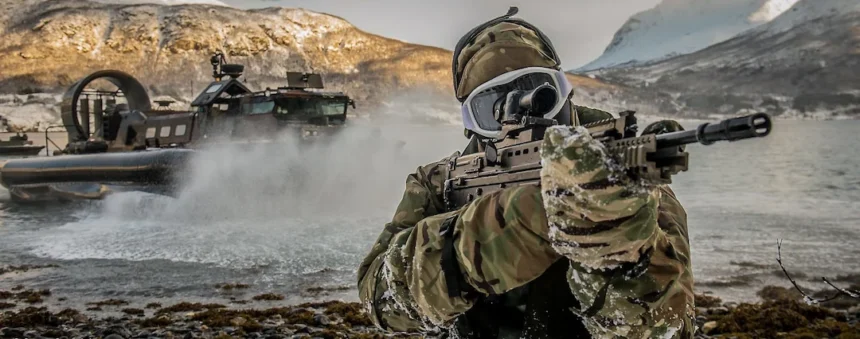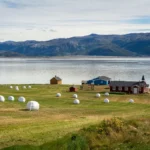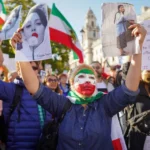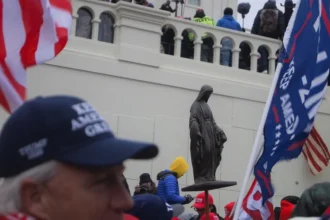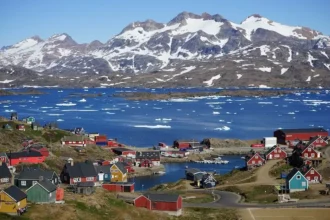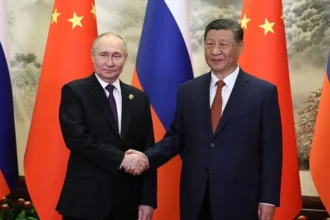From Nordic Neutrality to NATO’s Arctic Frontier
Since Russia’s 2022 invasion of Ukraine, there’s been a tectonic shift in Arctic diplomacy and security, resulting in the March 2022 diplomatic boycott of the Arctic Council (AC) under Russia’s term as rotating chair (2021-23), followed by the rapid pivot by Finland and Sweden from their long-established policies of neutrality to formal NATO membership, with Finland formally acceding to the alliance two years ago, on April 4, 2023 and Sweden doing the same just 13 months ago, on March 7, 2024.
- From Nordic Neutrality to NATO’s Arctic Frontier
- An ‘Ice Curtain’ Impedes Arctic Cooperation
- Indigenous Homelands Divided by a New Arctic Conflict
- The Collapse of Multilevel Arctic Security
- Rethinking Russia’s Isolation and the Risk to Circumpolar Cooperation
- The Long-Road Back: Restoring Inclusive Arctic Cooperation
- America Considers an Arctic Expansion, Putting NATO and the Arctic Council on Edge
- A Sudden Pivot: U.S.–Russia Rapprochement and NATO’s Fracture
- Why NATO’s Arctic Expansion Is Now Backfiring
With this sudden end of Finland’s and Sweden’s historic neutrality, so critical in many ways to the openness and cooperative dynamics of the Nordic Region hitherto bookended by Norway (a founding NATO member since 1949) and Russia (NATO’s principal opponent during Soviet times), emerged a strengthening alliance unity and military integration among the Arctic Council’s seven democratic member-states (known until recently as the “Arctic 7” or “A7”), with Russia – whose northernmost territories represent half the Arctic region, and whose Arctic economy and population exceeds all other AC member states combined – left out.
An ‘Ice Curtain’ Impedes Arctic Cooperation
This in turn precipitated a hardening of borders through military deployments and fortifications, erecting a new ‘Ice Curtain’ across the Arctic that is no less divisive than the ‘Iron Curtain’ erected at the start of the last Cold War which physically partitioned Europe between competing military blocs. NATO’s Nordic expansion was initially portrayed as a win by the West and a necessary step to protect the Arctic from a newly menacing and expansionist Russia.

While NATO’s expansion was catalyzed by the 2022 Russian invasion of Ukraine, tensions between Russia and the West in the Arctic had already been on the rise, as reflected in updated Arctic policy statements and revised Arctic strategies in the West in the preceding years. Because Arctic cooperation is rooted not only in east-west multilateral cooperation, but also in north-south state-indigenous cooperation, this new bifurcation into re-emergent Arctic blocs threatens the transnational and indigenous unity of the Arctic, with multiple indigenous homelands undergoing a de facto partitioning, reversing the gains achieved since the Cold War’s end.
Indigenous Homelands Divided by a New Arctic Conflict
This has undermined the transnational unity of the Sami Council, whose member communities span the newly expanded Russia-NATO frontier, as well as that of the Inuit Circumpolar Council (ICC), whose members span the Russia-Alaska frontier. Like the Sami, the Inuit now find their homelands in the crosshairs of an international struggle.

The Aleut International Association (AIA) is similarly divided, though like the ICC, most of its member communities are on the NATO side of the divide, but an outward flow of refugees since the war began across land borders between Russia and Finland and icy maritime borders between Siberia and Alaska indicates another potential vector of confrontation that could engulf the once isolated Arctic in an expanding armed conflict.
While the present hot war is confined to central Europe, the risk of escalation beyond Ukraine is omnipresent, with Ukrainian drone attacks already reaching into Russia’s Arctic, and the militaries of both sides expanding their presence in the Arctic region. Pressures on indigenous leaders to support their countries in wartime, on both sides, have already had a chilling effect on indigenous free expression, primarily through increasing self-censorship by hitherto outspoken leaders.
In Russia, the risks have proven even graver than censorship – where exile, imprisonment and assassination are a gathering risk to outspoken indigenous leaders, and disproportionate deployments of remote, non-Russian ethnic peoples to the front lines have hollowed out numerous Arctic villages of fighting age men, with non-Russian military casualties disproportionately high. As described by Miranda Bryant in The Guardian, “Sami people in Russia are being forced to hide their identity and live ‘outside the law’ for fear of imprisonment and persecution, leading figures from the community have warned,” after “Russia’s ministry of justice added 55 Indigenous organizations to a list of terrorists and extremists.”
The Collapse of Multilevel Arctic Security
The Ukraine war has transformed both the practice of Arctic diplomacy and the conceptualization of Arctic security, which since the 1991 Arctic Environmental Protection Strategy (AEPS) and its evolution in 1996 to the Arctic Council has been defined by its distinctive multilateral east-west (international) and multilevel north-south (indigenous-state) cooperation.
The resulting “mosaic of cooperation,” as famously described by pioneering Arctic international relations scholar Oran R. Young, has blessed the Arctic region with enduring stability rooted in this exceptional collaboration.
The renewed division of the Arctic into competing blocs risks silencing the plurality of voices that had hitherto defined the Arctic region and strengthened its multilateral and multilevel cooperation.
Since Russia’s invasion there has been a hardening of Arctic security to focus predominantly upon a newly perceived military threat from Russia against the Arctic region, displacing the prior pillars of a more holistic Arctic security (environmental, human, cultural and indigenous) prominent since the latter days of the Cold War, but nowadays all but forgotten as the Arctic is re-militarized at a frenetic pace.
Rethinking Russia’s Isolation and the Risk to Circumpolar Cooperation
Ironically, even as Russia embarked on its expansionist war in its southwest, Moscow remained committed at the outset of its 2021-23 term as rotating Arctic Council chair to cooperation with its circumpolar neighbors, regardless of their alliance membership.
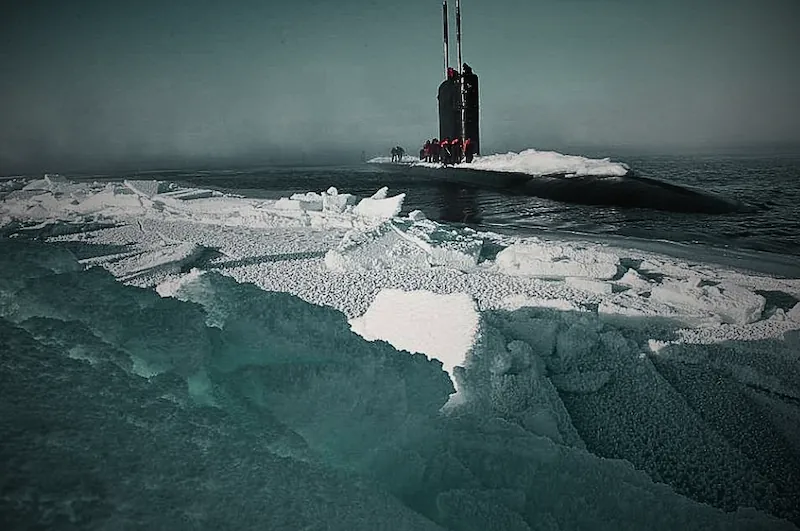
That Russia could and would continue nurturing a collaborative Arctic even as it engaged in regional conflicts as far afield as Syria, Libya, and Ukraine (experiencing only one brief interruption before, when in 2014 the US and Canadian AC representatives boycotted a Moscow meeting in protest), was the conventional wisdom by both the Council’s member states and its indigenous Permanent Participants from 1996 through to the start of 2022.
Indeed, Russia still represents fully half of the circumpolar world and isolating it from Arctic cooperation punishes more than Moscow: it places at risk the foundation of Arctic cooperation and the region’s stability. Governing the Arctic effectively, and peacefully, and sustaining multilateral commitment to protecting the Arctic environment and mitigating the collective dangers of climate change, continues to require Russia’s participation to succeed. Arctic indigenous peoples have recognized this since the outset of the war.
As Edward Alexander, Co-Chair of Gwich’in Council International (GCI), a Permanent Participant of the Arctic Council, observed in High North News: “There is no military solution to the problems in the north. We want diplomatic solutions. We do not fight with our friends to solve problems. We talk and make compromises.”
While leaders of the A7 emphasized Russia’s gathering threat to the West, Arctic indigenous leaders conveyed their empathy for Russia’s indigenous peoples; Chief Gary Harrison of the Arctic Athabaskan Council (AAC), a fellow Permanent Participant organization on the Council, said he “is deeply concerned about the indigenous population of Russia, who lives behind the new iron curtain. ‘Almost all of us have people in the Russian Arctic. We need to know how they are doing. For example, have we heard that the Russian authorities make indigenous people join the military, and this worries us.’”
The Long-Road Back: Restoring Inclusive Arctic Cooperation
Resuming Russian and indigenous engagement – as Norway has done under its term as rotating chair of the AC (2023-25) – amidst the ongoing war in Ukraine and the complex aftermath that will follow, will help ensure the Arctic remains the very zone of peace imagined by Gorbachev, whose passing at such a tumultuous time reminds us of the fragility of the Arctic peace we have long known.
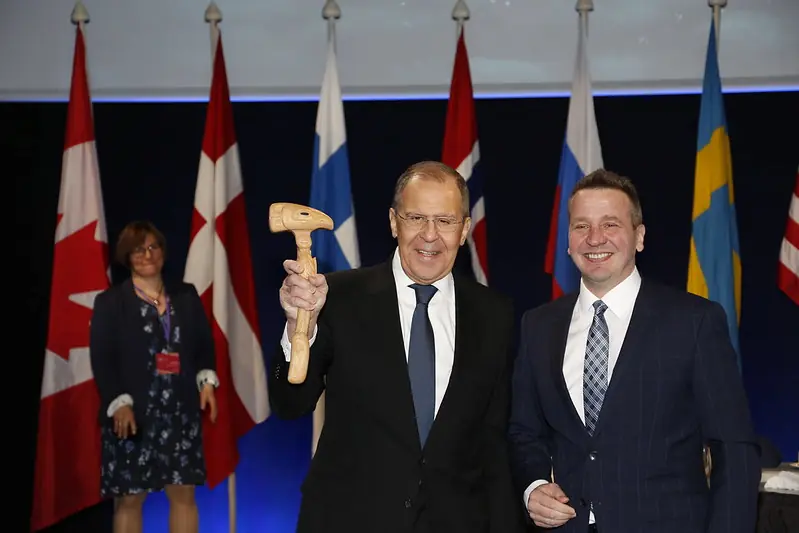
Russia’s war has now entered its fourth year, devolving into a violent war of attrition that has brought destruction to both eastern Ukraine and western Russia, with each country presently occupying the soil of its neighbor, and escalation beyond the current theater of war always possible (with the deployment of elite North Korean troops to jointly defend Russia’s western borders a worrisome indicator of things to come).
Indigenous peoples in Russia have found themselves disproportionately sent to fight on the frontlines even as Moscow endeavors to protect Russian conscripts from such dangers, emptying northern villages and leaving its own Arctic peoples in great distress and under intense pressure to profess support for the war.
Ukraine, in its efforts to reduce the threats posed by Russian air power, has launched drone attacks of Russian air bases in the Arctic, bringing war into the Arctic region for the first time since World War II. Arctic Indigenous peoples are very much caught in the middle of this cauldron of conflict, their homelands divided by what increasingly appears to be a new Arctic Cold War. Reconciliation in this environment will not be easy. But NATO is, first and foremost, an alliance of democracies bound by shared values and inclusive political cultures.
America Considers an Arctic Expansion, Putting NATO and the Arctic Council on Edge
This seems to have been forgotten as a new and unexpected regional conflict embroils Greenland, where the United States has called into question Denmark’s stewardship over Greenland and has articulated an intensifying aspiration to annex the island so that it becomes an American territory or state. While taking aim at Copenhagen, the White House has sought to reassure – unsuccessfully thus far – the people of Greenland, suggesting it can better meet their needs.
While intra-alliance disputes are not new for NATO, with past conflicts between Greece and Turkey, and between Iceland and Britain, having been overcome without the alliance fracturing. But this time, it is the military guarantor and leader of the alliance that has threatened the sovereignty of an alliance member, and endeavors to break up the Kingdom of Denmark.
A Sudden Pivot: U.S.–Russia Rapprochement and NATO’s Fracture
At the same time, the White House has quickly sought to mend fences with Russia and to restore a more collaborative and mutually respectful relationship, and such a rapprochement promises to restore East-West stability in the Arctic as well as worldwide, with new opportunities for a restoration of US-Russia Arctic cooperation. Washington’s pivot toward Moscow in many ways turns upside down the dynamic that has been underway in the Arctic since Russia invaded Ukraine in 2022, and America’s rapprochement with Russia is not universally embraced by the other democratic Arctic states, who continue to worry about Russia and fear the US may next undermine their security interests, much the same way it is now doing to Ukraine.
In the months ahead, with NATO in crisis and the Arctic Council’s democratic members – so recently united – now on separate sides of an intra-alliance conflict, there is much to be concerned about in the Arctic. But the restoration of a positive diplomatic relationship between the United States and Russia does help to defuse one of the most pressing security risks facing the Arctic in recent years, that of continued Russian aggression against the West, which the White House may be better positioned to dissuade with Moscow now in greater alignment with Washington.
Whether this will reassure Finland and Sweden, which had both turned to the West for their collective defense, only to see NATO itself stumble into what could prove to be an existential crisis, may soon make them long for their days of neutrality, when they did not depend entirely upon the United States or its NATO partners for their survival.
Why NATO’s Arctic Expansion Is Now Backfiring
What began as a show of unity against Russian aggression is now revealing its internal contradictions. NATO’s northern enlargement, once framed as a stabilizing move, has fractured the very alliances it sought to strengthen—splitting indigenous organizations, paralyzing Arctic diplomacy, and provoking intra-alliance tensions from Greenland to the Baltic.
Instead of reinforcing cooperation, the expansion has accelerated militarization, revived Cold War divisions, and undermined the multilateral ethos that once defined Arctic governance. By isolating Russia entirely and overextending its own strategic coherence, NATO may have weakened its ability to manage the region it is now obligated to defend.


